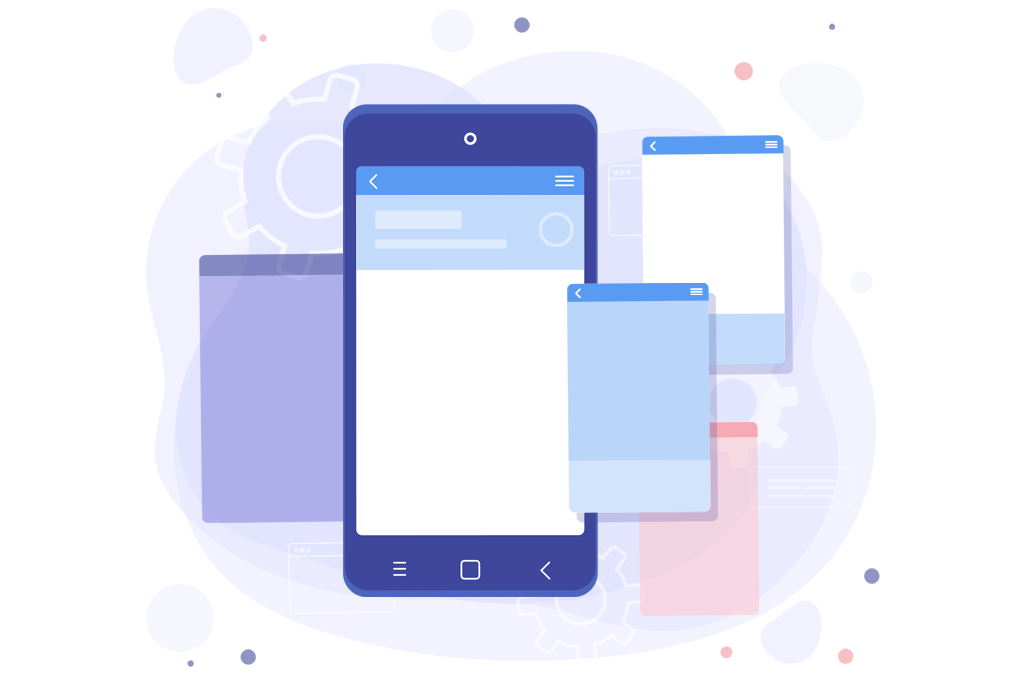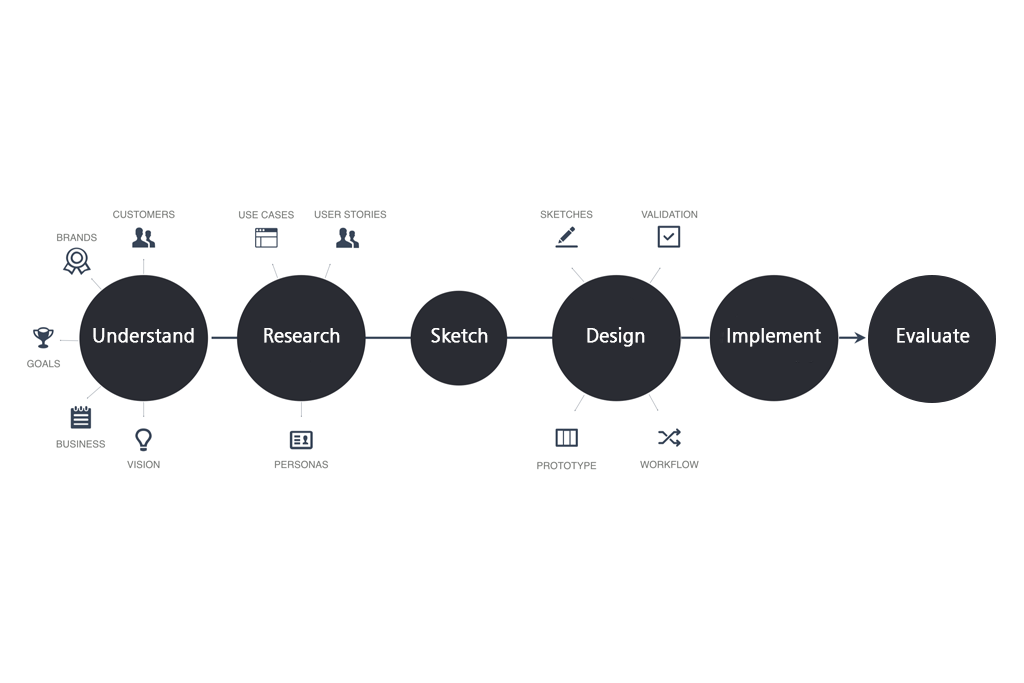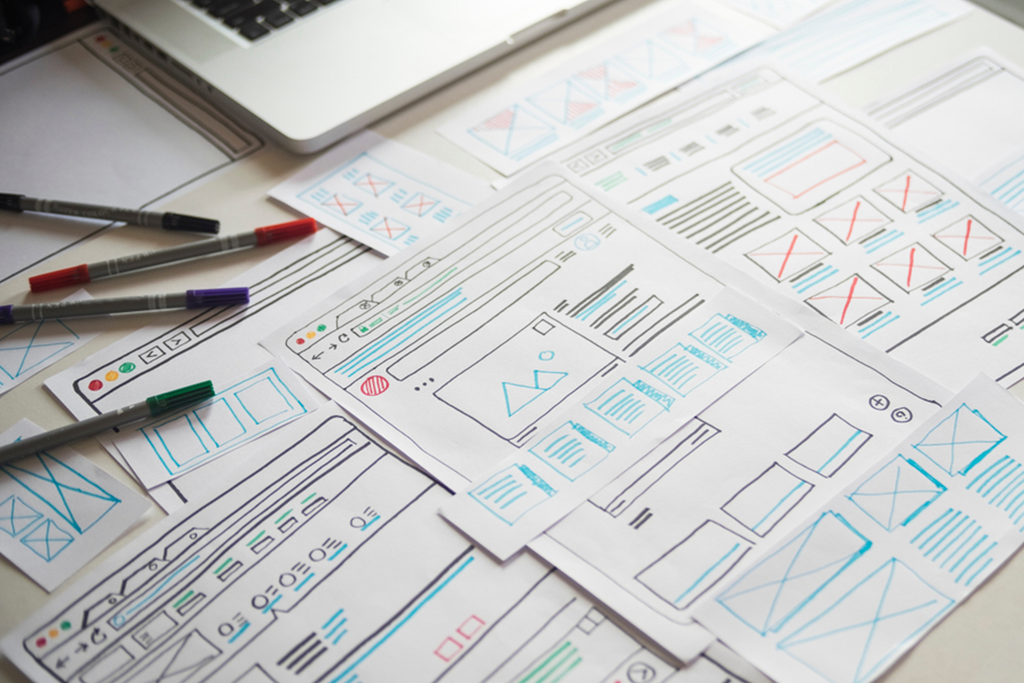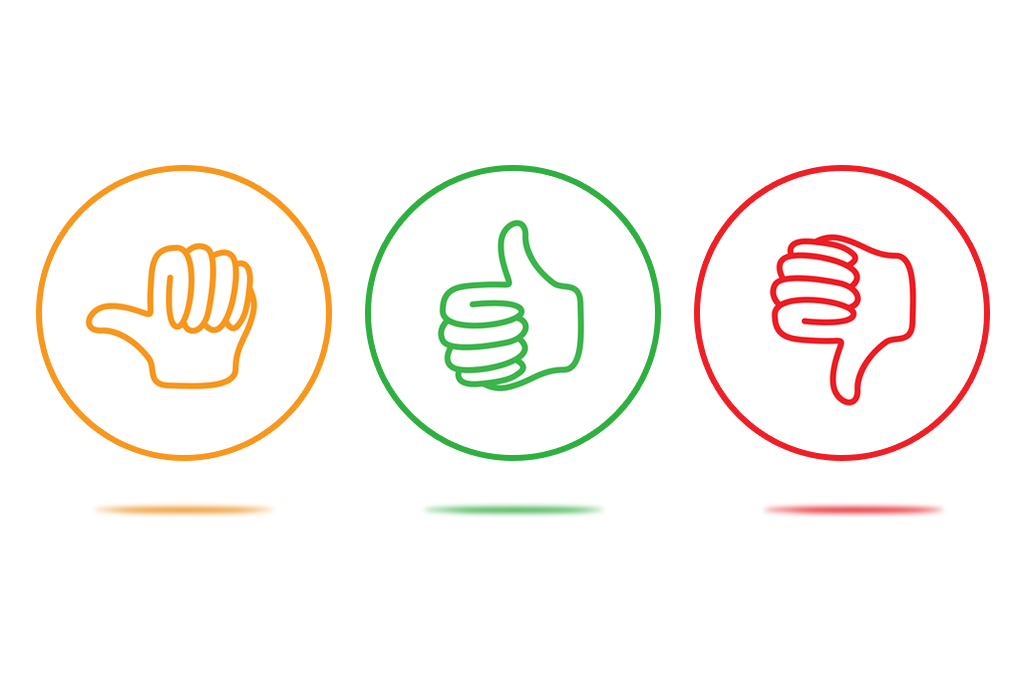
UX design process- Do it the right way!
UX process and how it looks like
If we follow the UX design process it does not mean it will give the user an intuitive and pleasurable experience but it also gives an opportunity to the UX designers to iterate, improve and polish designs at every phase.
Let’s start with UX meaning and design breakdown steps and how the UXD process plays an important role.
What is the user experience (UX)?
UX adds value to the product which a user uses and thus enriches his experience of using by satisfying the usability of the product.
In UX design, designers create a product that provides meaningful and relevant experiences to the users.
What is user experience design?
Importance of user experience design?
Well, the question is why user experience design matters and how it should look?
According to steve jobs- “Design is not just what it looks like and feels like. Design is how it works.”
By anticipating and fulfilling the needs of users a good user experience design is created for a positive experience. Customers will stay loyal and satisfied with your business when his good UX design needs are fulfilled. In case if you don’t have a good UX design, you might leave your customers frustrated and unhappy with the product or even this can result in fewer users.
From brand to brand and product to product, the UX designs might differ from what it actually looks like.
So let’s have a look at the UX design process.
Learn how to create a great user experience by following
UX design process –

While the question starts with how the user experience process looks like? Well, the answer to this question is: “ it depends.”
Every industry has a UX design process but every industry does it in a different way because a UX design depends on the project and its nature. Every project has different requirements and different approaches. There are certain steps that a designer must follow (like thorough research before deciding prototypes) and principles for custom-designed specific projects.
1. Understand-
Define and understand the problem first. Understand what you are trying to solve.
According to Mathew Wakeman from the book of UX research – “if I had only one hour to solve a problem, I would spend up to two-third of that hour in attempting to define what exactly the problem is.”
Ux design work is to provide ease of working to its users and solve problems and achieve goals and above all giving delightful feel while using. This is the first and foremost step in the whole process that is understanding the problems and working on them.
Well, this understanding step includes three main focus points
-
Meet stakeholders or interview stakeholders- to gather insights about the goals of the project you need to interview key stakeholders. For a result-driven process, define the goals and values of the product.
-
Product definition- before building a product understand the context of existence. It helps in setting up a stage for success. At this phase, UX designer brainstorms the product and product concept with stakeholders at a high level. Design better physical products by discovering better thoughts.
-
Gather inspirations- instead of understanding your problem through google, meet real users and observe and discover a better thought on how to design desired products. Look for patterns, stories, environment and unexpected and don’t fall for early conclusions.
2) Research –

To design a rich user experience, research is a key step. The design team works hard to explore about the UX design trends and new features.
Three main stages of research are:
-
Research latest UX trends
-
Examine competitors
-
Guidelines in pipelines
As per our product designer, UX competitive analysis are
-
Understanding market conditions
-
Learning about product and domain
-
Gathering inspirations, ideas and information from competitors.
“It took me a few seconds to draw it, but it took me 34 years to learn how to draw it in a few seconds.”– Paula Scher
It is important to keep an eye on the latest UX trends and designs and user experience guidelines. To provide the desired output start thinking about possible outcomes, options, and layouts.
3) Sketch –

At this stage required feature of UI definition is involved and stakeholders and design team work on drawing the last two stages of the process. This stage includes
-
Collecting ideas
-
Drafting
sketches and wireframes
-
Evaluating and redrawing
To share your ideas with stakeholders you need to draw wireframes, paper sketches, whiteboard flows, etc.
This stage is considered as an iterative process where everything is done in a particular format.
“Create an unmatched experience through the designing process
Draw and draft, redraw and redraft and experience the actual designing process.”
While designing the goal should be kept in mind- achieving end-user satisfaction. Testing and wireframing are part of this stage. To get the input from stakeholders, designing team create mockups and share designs.
4) Design –
Once finalizing the layout and required interface flow, its time to work on graphics. Turn designs, mockups, and wireframes in great-looking images, themes, and styles.
Design specifications include principles, guidelines, colors, typography, iconography and the development team in this stage. The main steps in this stage are-
-
Create a prototype
-
Define UX guidelines
Activities included in this stage are-
-
Designing UI images
-
For required final implementation, define theme, specs, and guidelines
-
For screens designing icons
-
Taking session of stakeholders to get technical and business perspective feedback
5) Implement –
While the design process is in progress, the technical team participates in the early stage of the development process and they can start implementation. When the development team gets design artifacts they build back end functionality and connect it with UI. Both the design and development team gets involved in this step.
Team responsibility –
-
Design team
-
Development team
Activities involved
-
Front interface and backend functionality implementation
Results
Following the design theme and style, a UI developed with complete functionality and experience.
6) Evaluate –

Once the product feature is implemented, the end product is evaluated on the basis of a few factors
-
Ease of usability for end-user?
-
Checking the usability of the system?
-
Flexibility and easy to change
-
Checking whether it will provide the desired solution to a user’s problem
-
The uniqueness of product and features to increase usability by the user for its experience.
“Identifying areas of improvement and validation by the design team in terms of user flow and experience.”
Activities involved in this stage-
-
Feel the experience by going with user flow
-
Comparison of implementation and desired user interface
Results-
-
Area marking where improvisation is required
-
UI audit reports
-
User feedbacks
As the process ends the changes required can be made in stages 2, 3, and 4 depending on the requirements. This process continues until the desired user experience and satisfaction are not achieved.
Understand the UX DESIGN fundamentals adopted by a UX designer in our upcoming blog UX design fundamentals.
Conclusion-
By following the above process and in an iterative way an amazing user experience is achieved. The whole team of the company (stakeholders) works in this area to experience the rich user experience design and desired results. By following these steps you can retain your users and can attract new users in this competitive era. Feedbacks are appreciated.
Thank you for reading!